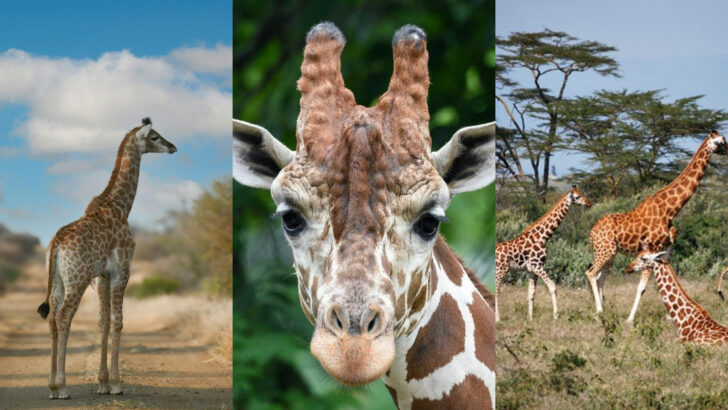Giraffes are basically nature’s supermodels—tall, graceful, and impossible to ignore. But beyond their long legs and spotted coats, these towering giants have secrets that will leave you amazed.
Did you know they only need a few minutes of sleep per day? Or that their tongues are long enough to clean their own ears?
They may look gentle, but giraffes can throw a powerful kick that can take down a lion. And when it comes to romance, their courtship rituals are just as fascinating as their neck-wrestling battles for dominance.
Get ready to see giraffes in a whole new way! Here are 17 wild facts about these incredible creatures that prove they’re more than just the tallest animals on Earth.
Tongue Versatility

Giraffes possess incredibly versatile tongues, stretching an astonishing 18 to 20 inches. This prehensile marvel aids in grasping foliage from towering trees.
Coated in a special antiseptic saliva, their tongues remain protected from thorny branches, showcasing nature’s ingenuity. Their dark, purplish hue isn’t just for show—it’s thought to prevent sunburn during extensive feeding sessions.
Observing giraffes delicately pluck leaves with such precision highlights their adaptation to a life spent reaching for the sky. This unique feature exemplifies how evolution crafts specialized tools for survival in the wild.
Unique Neck Vertebrae

Despite their towering necks, giraffes have just seven neck vertebrae—the same number that humans do. Each vertebra is elongated, contributing to their distinctive long necks.
This adaptation allows access to high foliage unreachable by most other herbivores. Their neck structure supports a specialized cardiovascular system, necessary to manage blood flow to their heads.
Witnessing a giraffe’s neck in motion, one can appreciate the delicate balance between length and flexibility. This evolutionary masterpiece underscores the giraffe’s niche in its ecosystem, embodying the elegance of form meeting function.
Silent Communication
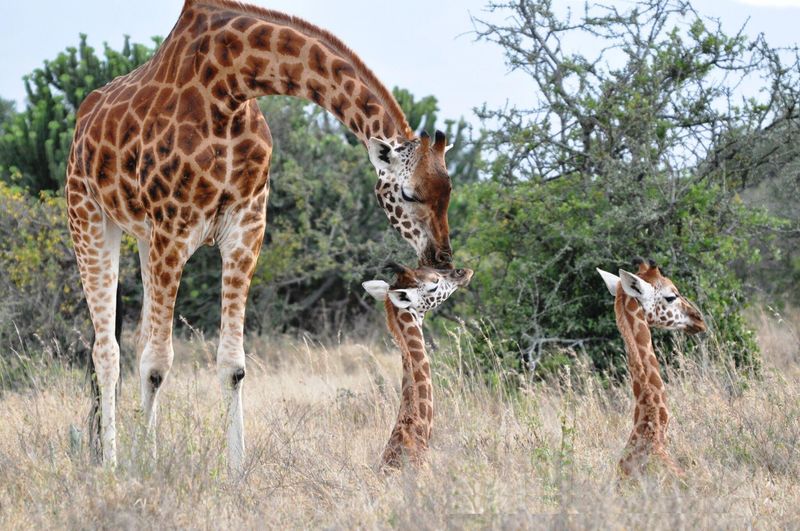
Though often perceived as silent giants, giraffes communicate using infrasound—a sound frequency below human hearing. This enables them to converse over long distances without alerting predators.
These low-pitched hums and rumbles connect herds, facilitating social bonds and coordination. Observing giraffes seemingly in tranquil silence raises curiosity about the conversations we’re missing.
Their ability to ‘speak’ volumes without a sound offers a glimpse into their complex social lives. This silent dialogue exemplifies the giraffe’s stealthy intelligence and adaptation to a world where survival often depends on subtlety.
Complex Social Structures
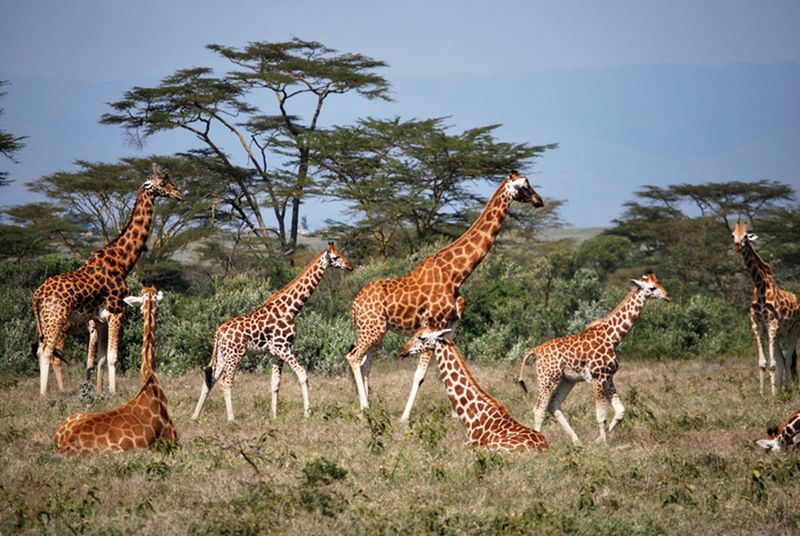
Giraffe social circles are more intricate than they appear. Known as ‘towers,’ these groups are fluid, with members coming and going frequently.
Females often gather for protection of the young, while males may form bachelor groups or embark on solitary wanderings. Each tower functions with a loose hierarchy, where dominance is established through ‘necking’—a form of combat involving swinging their necks.
Watching giraffes engage in these social rituals reveals a surprisingly organized community. Their interactions highlight the importance of social bonds in navigating the challenges of the wild.
Efficient Sleepers

Giraffes are masters of the power nap, often sleeping for merely five minutes at a stretch. Over a 24-hour period, they may only sleep for a total of 30 minutes to two hours.
This vigilance allows them to remain alert to potential threats. Their peculiar sleeping position—either standing or briefly lying down—keeps them ready to spring into action.
Observing a giraffe in repose offers insight into its survival strategy, balancing rest with the constant need for vigilance. This minimalist sleep schedule underscores their adaptability to an environment fraught with danger.
Ossicone Functions

Giraffes sport skin-covered knobs atop their heads known as ossicones. Unlike antlers, these structures are permanent and composed of ossified cartilage.
Functionally, they play a role in thermoregulation and are used during necking contests among males. The presence of ossicones also aids in species recognition.
Observing giraffes engage in playful sparring or serious battles, their ossicones become tools of both competition and identity. This feature illustrates the multiplicity of purposes a single evolutionary trait can serve, enhancing both survival and social interaction in their natural habitat.
Heart of a Giraffe

Within the giraffe’s towering frame beats an extraordinary heart, weighing up to 25 pounds. This powerhouse pumps blood with immense pressure, overcoming the challenges of gravity to reach the brain.
Its robust walls and unique structure ensure that blood flow remains consistent, preventing blackouts when giraffes lower their heads. Understanding this monumental organ offers insight into the giraffe’s evolutionary adaptations, merging physical strength with delicate precision.
This biological wonder highlights the intricate balance nature achieves, allowing these animals to thrive in their unique ecological niche.
Survival of the Calf
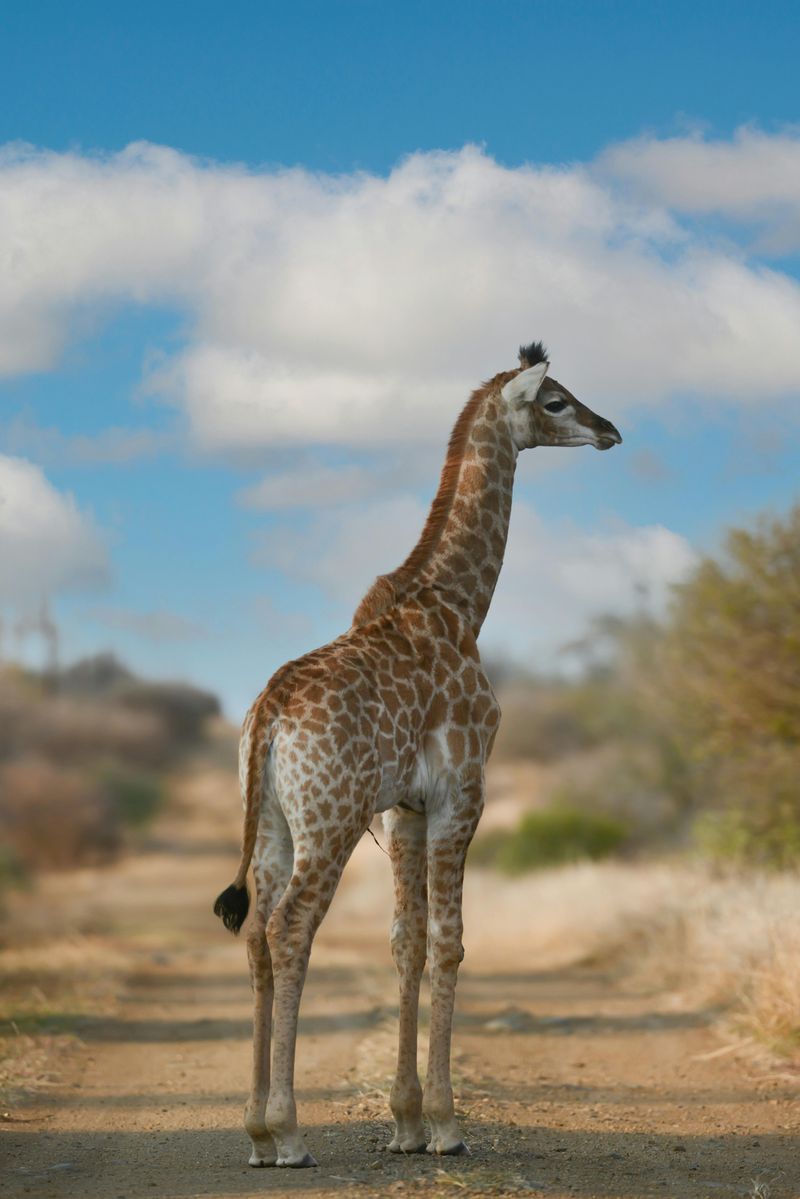
Giraffe calves make a dramatic entrance into the world, plummeting several feet during birth. This fall serves a vital purpose, stimulating the calf’s initial breath.
Within hours, these resilient newborns are on their feet, ready to keep pace with their mothers. Their rapid development is critical for survival, minimizing vulnerability to predators.
Observing a wobbly-legged calf navigate its first day exemplifies the resilience and instinctual drive inherent in giraffes. This early life stage reflects the harsh realities and remarkable adaptations necessary for survival in the savanna.
Giraffe Vision

Possessing one of the sharpest visions among mammals, giraffes can spot predators from miles away. Their large, expressive eyes are positioned to provide a wide field of view, vital for survival.
This acute eyesight complements their height, enhancing their ability to monitor the savanna landscape. Observing a giraffe scan its surroundings with those soulful eyes reveals an animal finely tuned to detect danger.
Their keen vision underscores their role as vigilant sentinels of the savanna, always aware and prepared to protect themselves and their herd from lurking threats.
Dietary Habits
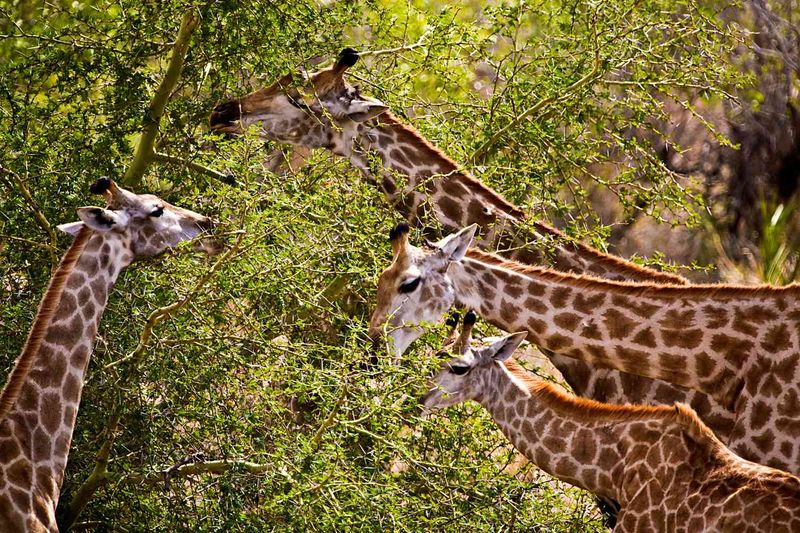
A giraffe’s diet consists primarily of leaves, flowers, and fruit from tall trees, particularly acacias. Their selective feeding habits allow them to consume over 75 pounds of vegetation daily.
With a prehensile tongue and specialized lips, they skillfully strip foliage without harm from thorns. This dietary adaptation minimizes competition with other herbivores.
Observing a giraffe feed is akin to watching a ballet of the wild, each movement deliberate and precise. Their eating habits illustrate a harmonious relationship with their environment, showcasing the giraffe’s role as both a consumer and caretaker of the savanna.
Unique Coat Patterns
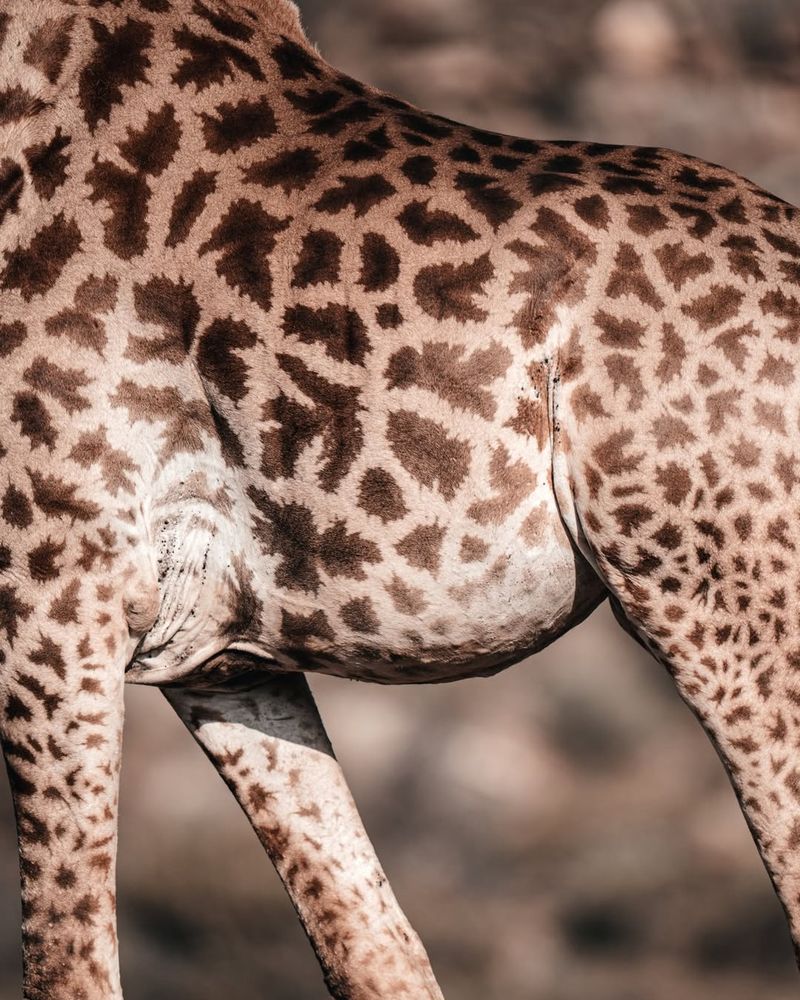
The giraffe’s coat is a canvas of individuality, with patterns unique to each animal. These spots serve multiple functions, including camouflage and thermoregulation.
Beneath each patch lies a sophisticated system of blood vessels that aid in heat dispersion. The arrangement of these spots is not just aesthetic; it plays a critical role in species and individual identification.
Observing the interplay of light and shadow across a giraffe’s coat reveals an artful design of nature. This distinctive patterning highlights the complexity and beauty inherent in giraffe biology, woven into their identity.
Giraffe Conservation
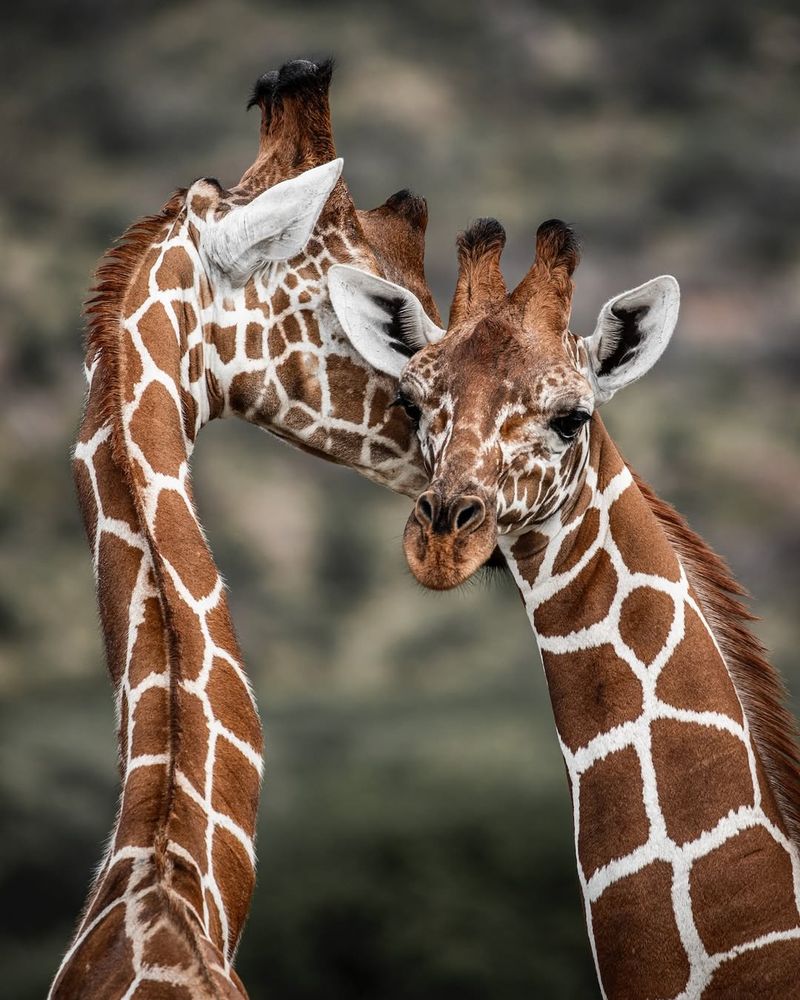
Giraffes face significant threats from habitat loss and poaching. Conservation efforts are crucial to preserving their populations and habitats.
Dedicated conservationists work tirelessly to study and protect these magnificent creatures. Their efforts include habitat restoration, anti-poaching measures, and community education programs.
Witnessing the dedication to giraffe conservation reveals a commitment to maintaining biodiversity and ecological balance. These initiatives highlight the global responsibility to ensure future generations can marvel at these iconic animals.
The collective drive to protect giraffes underscores the importance of proactive conservation in safeguarding our planet’s natural wonders.
Giraffes and Human Culture
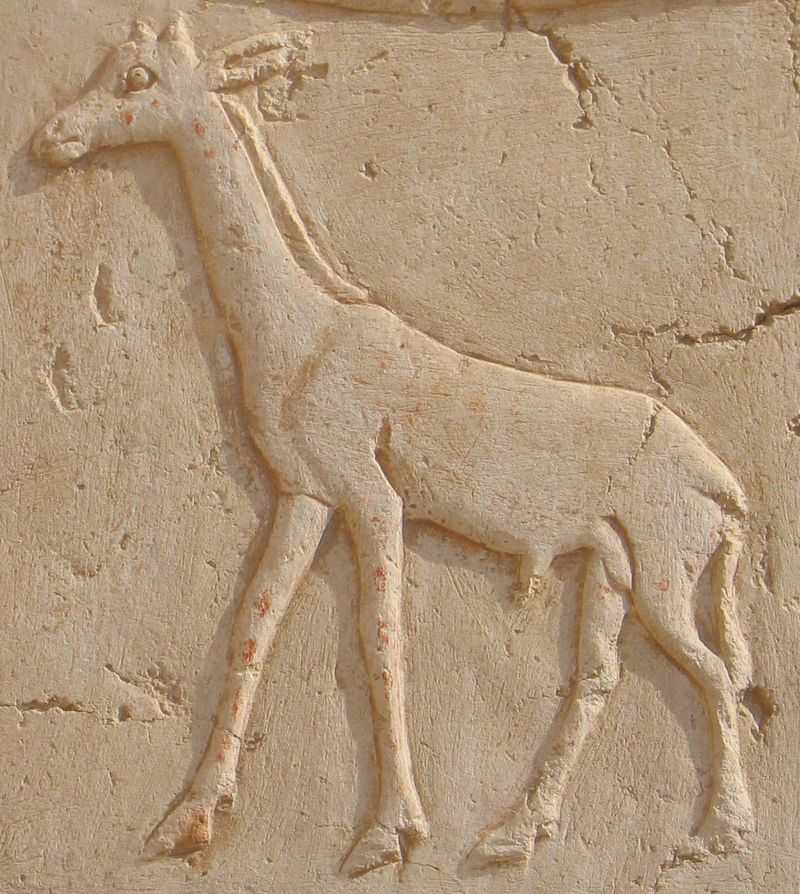
Giraffes have intrigued humans throughout history, featuring in ancient art and mythology. From Egyptian hieroglyphs to African folklore, they symbolize grace and majesty.
Their unique form inspires artists and storytellers, bridging ancient and modern cultures. Understanding the cultural symbolism of giraffes reveals humanity’s enduring fascination with these creatures.
This historical bond enriches our appreciation of giraffes, reminding us of their impact on human creativity and expression. The giraffe’s presence in human culture underscores a shared history, weaving their story into the tapestry of human civilization across time.
Incredible Running Speed

Despite their towering height, giraffes can gallop at speeds up to 37 miles per hour. This agility is essential for escaping predators, relying on long strides and strong legs.
Their unique gait—a combination of walking and running—enables efficient movement across the savanna. Witnessing a giraffe in full stride reveals an unexpected elegance and power, defying assumptions about their size.
Their remarkable speed emphasizes the giraffe’s adaptability, allowing them to thrive in a perilous environment. This blend of grace and swiftness highlights the giraffe’s dynamic role within the intricate dance of the African landscape.
The Role of Giraffes in Ecosystems

Giraffes are more than just iconic figures; they play a vital role in their ecosystems. As browsers, they help maintain plant diversity and structure by feeding on foliage that other herbivores can’t reach.
Their presence supports a wide range of species that depend on the same habitat. Observing giraffes in their natural environment reveals their impact on the balance of their ecosystem.
This ecological role underscores the interconnectedness of life, illustrating how giraffes contribute to the health and diversity of their surroundings. Their existence highlights the intricate web of relationships that sustain the savanna.
Giraffe Lifespan and Longevity
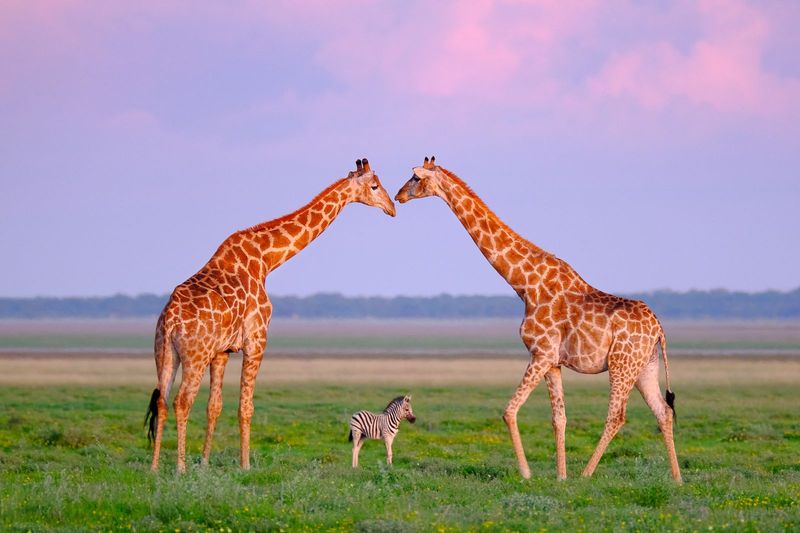
Giraffes enjoy long lifespans, living up to 25 years in the wild. Their longevity depends on factors like habitat quality, predation, and nutrition.
This extended lifespan allows them to play a critical role in the social structure of their herds. Older giraffes often act as leaders, guiding younger members and passing on knowledge.
Their long lives provide continuity and stability within the herd. Observing the interactions between older and younger giraffes reveals the importance of these venerable creatures.
Their presence ensures the transmission of wisdom and experience, fostering resilience within their communities.
Giraffe’s Unique Drinking Technique
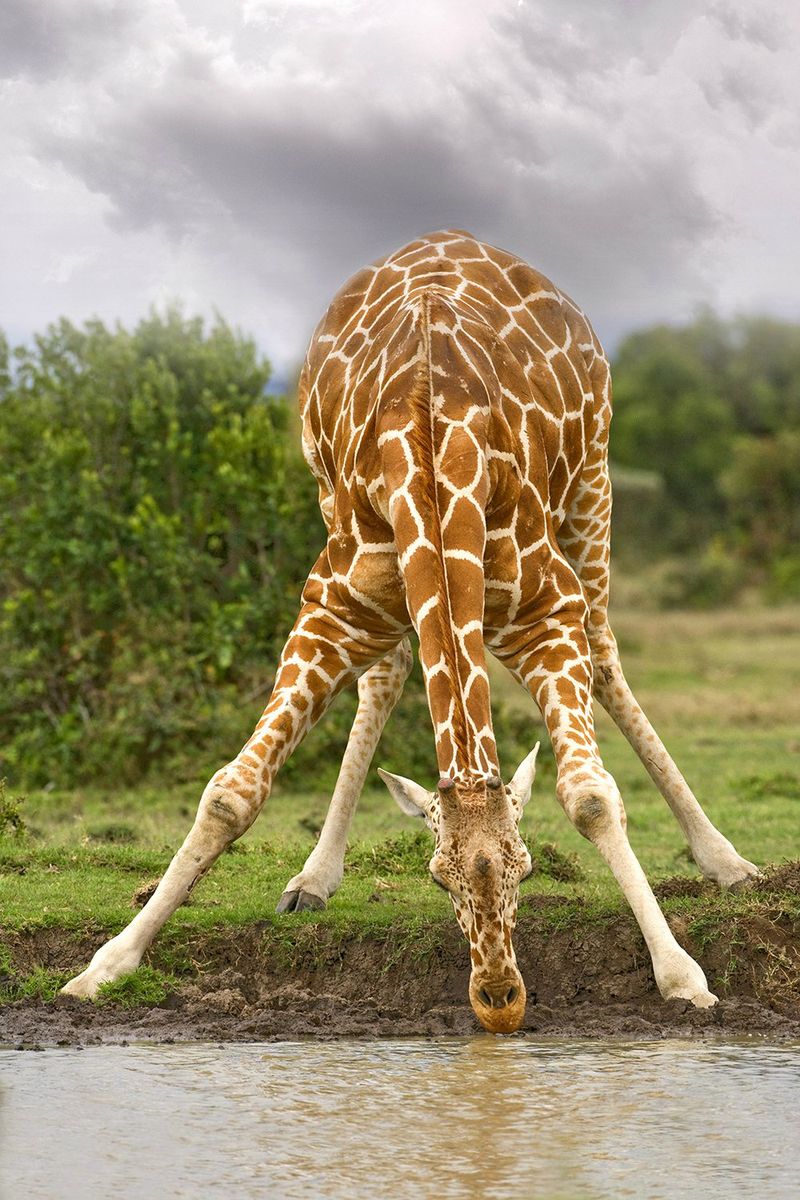
Drinking poses a challenge for giraffes due to their towering height. They must splay their front legs and bend their knees or spread their legs wide apart to reach the ground.
This precarious position makes them vulnerable to predators.
To compensate for this vulnerability, giraffes drink quickly and rely on the watchful eyes of the herd to alert against danger. This communal vigilance is a key survival strategy.
Their necks are too short to reach the ground when standing upright, a surprising fact given their overall size. This necessitates the unique drinking posture that distinguishes them from other animals.

